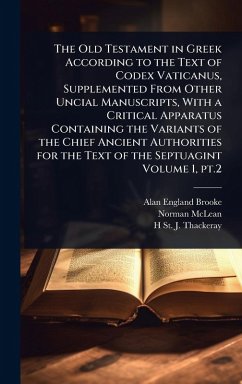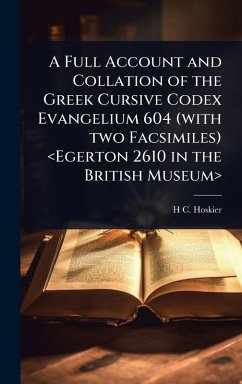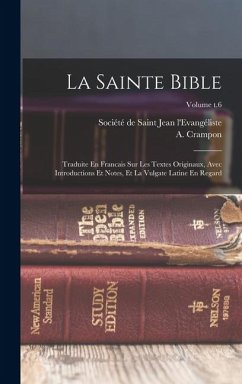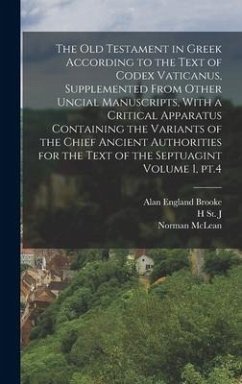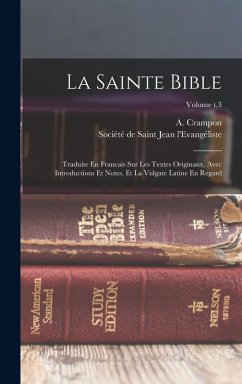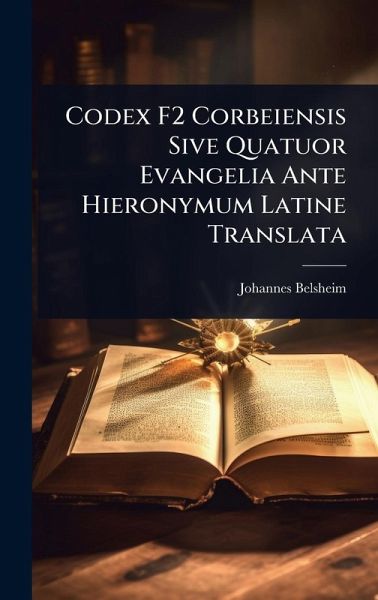
Codex F2 Corbeiensis Sive Quatuor Evangelia Ante Hieronymum Latine Translata
Versandkostenfrei!
Versandfertig in über 4 Wochen
29,99 €
inkl. MwSt.
Weitere Ausgaben:

PAYBACK Punkte
15 °P sammeln!
Codex F2 Corbeiensis Sive Quatuor Evangelia Ante Hieronymum Latine Translata presents a meticulously transcribed edition of the four Gospels in Latin, predating Jerome's Vulgate. Sourced from a parchment manuscript believed to have been written in the fifth or sixth century and preserved in the Bibliothèque Nationale in Paris, this work offers invaluable insight into the early Latin translations of the Gospels. Edited by Johannes Belsheim, this edition provides scholars and students of biblical studies with a critical resource for understanding the textual history of the New Testament. Its si...
Codex F2 Corbeiensis Sive Quatuor Evangelia Ante Hieronymum Latine Translata presents a meticulously transcribed edition of the four Gospels in Latin, predating Jerome's Vulgate. Sourced from a parchment manuscript believed to have been written in the fifth or sixth century and preserved in the Bibliothèque Nationale in Paris, this work offers invaluable insight into the early Latin translations of the Gospels. Edited by Johannes Belsheim, this edition provides scholars and students of biblical studies with a critical resource for understanding the textual history of the New Testament. Its significance lies in its preservation of a pre-Vulgate Latin text, offering a glimpse into the diverse textual landscape of the early Church. This book is essential for those studying the development of the Latin Bible and the transmission of the Gospel texts. This work has been selected by scholars as being culturally important, and is part of the knowledge base of civilization as we know it. This work was reproduced from the original artifact, and remains as true to the original work as possible. Therefore, you will see the original copyright references, library stamps (as most of these works have been housed in our most important libraries around the world), and other notations in the work. This work is in the public domain in the United States of America, and possibly other nations. Within the United States, you may freely copy and distribute this work, as no entity (individual or corporate) has a copyright on the body of the work. As a reproduction of a historical artifact, this work may contain missing or blurred pages, poor pictures, errant marks, etc. Scholars believe, and we concur, that this work is important enough to be preserved, reproduced, and made generally available to the public. We appreciate your support of the preservation process, and thank you for being an important part of keeping this knowledge alive and relevant.




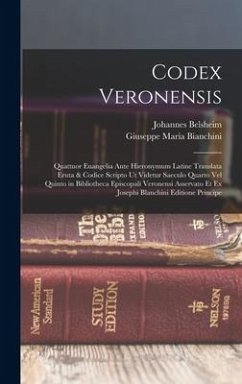

![The Four Gospels from the Codex Corbeiensis (Ff [Or Ff2]: Being the First Complete Edition of the Ms. Now Numbered Lat. 17225 in the National Library Cover The Four Gospels from the Codex Corbeiensis (Ff [Or Ff2]: Being the First Complete Edition of the Ms. Now Numbered Lat. 17225 in the National Library](https://bilder.buecher.de/produkte/67/67110/67110314n.jpg)
